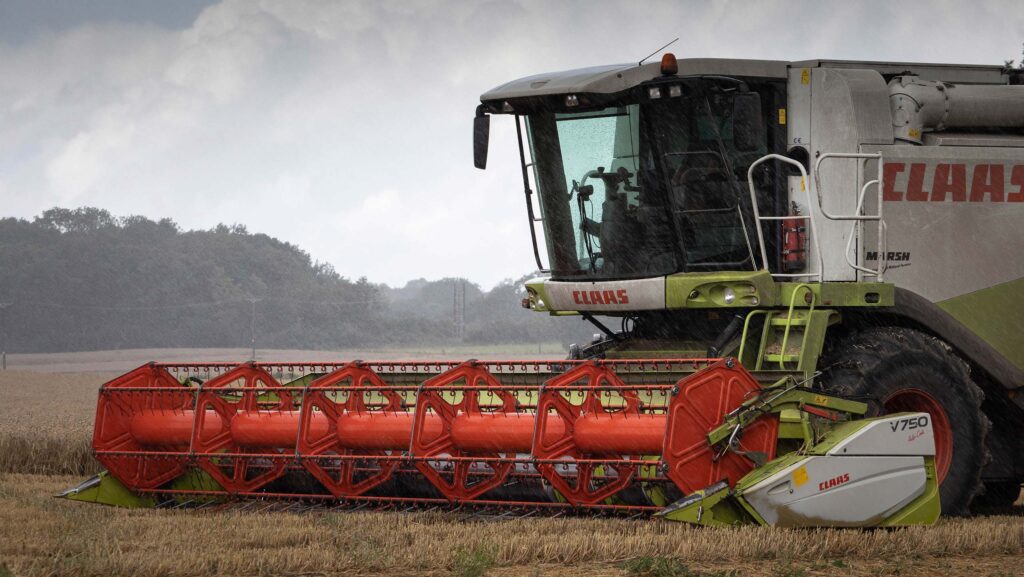England has experienced its second worst harvest this year after record-breaking wet weather hit crop yields and quality, figures by Defra reveal.
Provisional 2024 Defra cereal and oilseed production figures for England show the country suffered its second worst harvest since records began in 1983, and the smallest since 2020, after heavy rain and flooding caused havoc last autumn and again in the spring.
Wet weather during July and August also disrupted harvesting progress in some English regions.
See also: Worst harvest for nearly 40 years at Northumberland farm
Fears are growing for 2025 harvest prospects as many arable farmers have so far been unable to drill their autumn crops after some regions received in excess of 300% of their average September rainfall.
Provisional Defra figures show this year’s wheat harvest in England is predicted to be 10m tonnes, down 22% from 2023 due to reduced yield and area planted.
Winter barley is set to fall by 26%, but this is offset by a 41% increase in spring barley, meaning overall barley production is up 2.7%, estimated at 4.9m tonnes, compared to 2023.
The oilseed rape harvest is estimated to have fallen year on year by 33% to 687,000t, driven by a 29% decrease in area and a 7.9% decrease in yield. Compared to the five-year average, the OSR harvest for 2024 is down by 38%.
Wheat straw production is projected to fall 17% to 2.4m tonnes, while barley straw is expected to increase 12% to 1.7m tonnes.
Tom Lancaster from the Energy and Climate Intelligence Unit (ECIU) think tank stressed the urgent need for support from the new Labour government to bolster food security against these extreme weather events.
He said investments in sustainable farming practices must be part of the upcoming budget.
Lincolnshire arable farmer Colin Chappell highlighted the precarious state of the industry, stating now is not the time to cut the agriculture budget but rather to enhance resilience through targeted policies and support.
Scottish harvest insight
A separate NFU Scotland harvest survey of more than 150 growers has revealed mixed results across Scotland, with significant variability in yields influenced by adverse weather conditions.
Some regions reported wheat yields ranging from 6t/ha to 11t/ha, illustrating the impact of localised conditions.
Challenges such as high moisture levels in grain and the recent drop in market prices have left many Scottish farmers concerned about the future.

